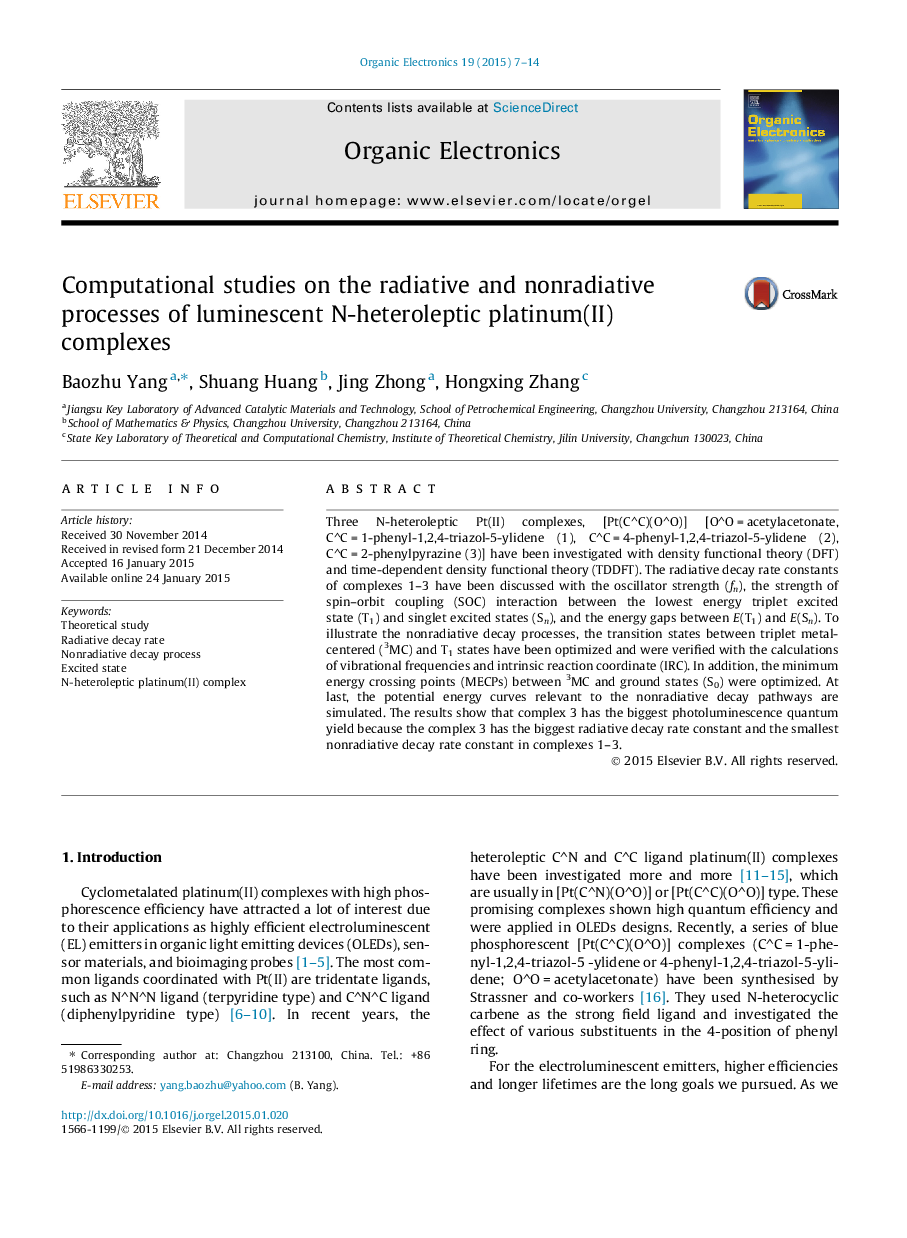| کد مقاله | کد نشریه | سال انتشار | مقاله انگلیسی | نسخه تمام متن |
|---|---|---|---|---|
| 1266935 | 1496838 | 2015 | 8 صفحه PDF | دانلود رایگان |

• We investigated three platinum(II) complexes with density functional theory.
• The radiative decay rate constants of the complexes have been discussed.
• The nonradiative decay processes of the complexes have been simulated.
Three N-heteroleptic Pt(II) complexes, [Pt(C^C)(O^O)] [O^O = acetylacetonate, C^C = 1-phenyl-1,2,4-triazol-5-ylidene (1), C^C = 4-phenyl-1,2,4-triazol-5-ylidene (2), C^C = 2-phenylpyrazine (3)] have been investigated with density functional theory (DFT) and time-dependent density functional theory (TDDFT). The radiative decay rate constants of complexes 1–3 have been discussed with the oscillator strength (fn), the strength of spin–orbit coupling (SOC) interaction between the lowest energy triplet excited state (T1) and singlet excited states (Sn), and the energy gaps between E(T1) and E(Sn). To illustrate the nonradiative decay processes, the transition states between triplet metal-centered (3MC) and T1 states have been optimized and were verified with the calculations of vibrational frequencies and intrinsic reaction coordinate (IRC). In addition, the minimum energy crossing points (MECPs) between 3MC and ground states (S0) were optimized. At last, the potential energy curves relevant to the nonradiative decay pathways are simulated. The results show that complex 3 has the biggest photoluminescence quantum yield because the complex 3 has the biggest radiative decay rate constant and the smallest nonradiative decay rate constant in complexes 1–3.
Figure optionsDownload as PowerPoint slide
Journal: Organic Electronics - Volume 19, April 2015, Pages 7–14